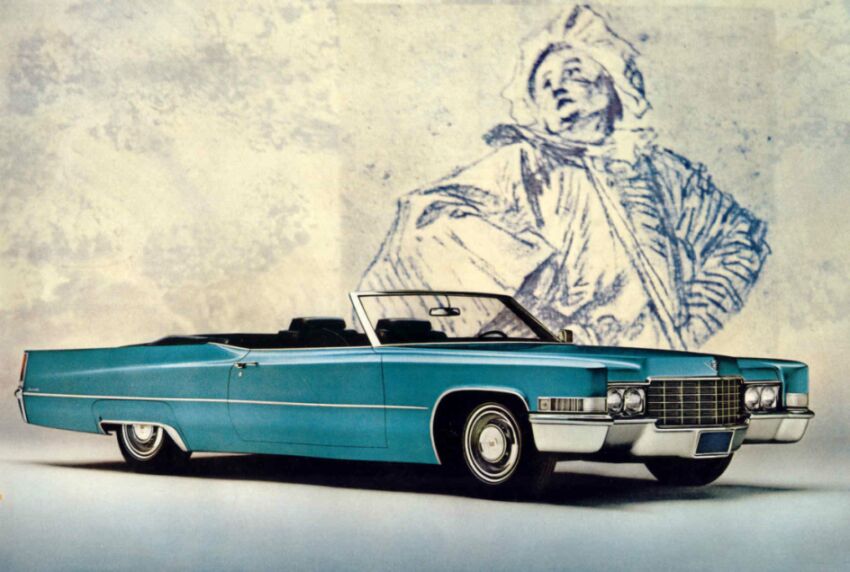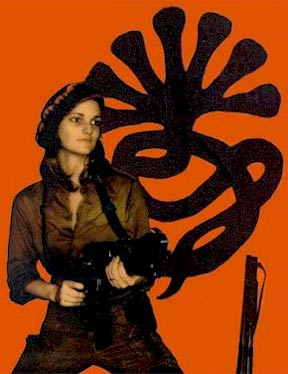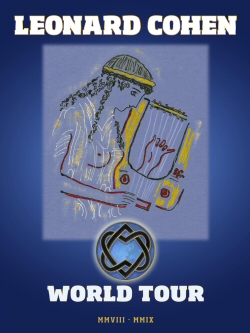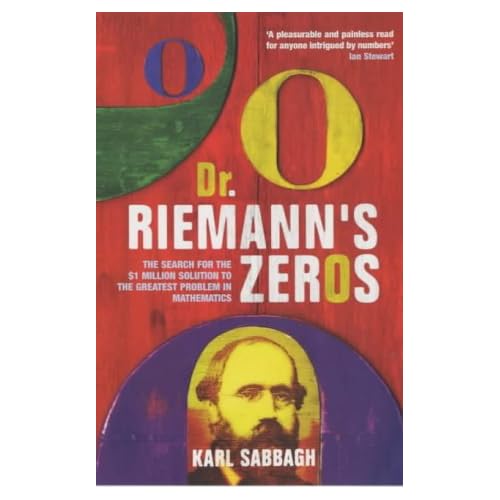 For years I listened to at least one Van Morrison track every day, often playing one of his songs to energize myself before going in to teach a class or give a lecture. We're talking major obsession, here... so bear with me and this long post.
For years I listened to at least one Van Morrison track every day, often playing one of his songs to energize myself before going in to teach a class or give a lecture. We're talking major obsession, here... so bear with me and this long post.
These days my Van-time comes in waves, on and off. Lately it's been on to an unusual extent, due not only to the release of his latest album Keep It Simple, but also to a belated discovery of his 2002 disc Down the Road which I had not paid particular attention to when it was released (being in a Van slump a the time), but which I now realize contains some really good material. To add to this rather muddled frenzy I have also recently acquired the 3CD version of Still on Top, the better of the several greatest hits packages available on a crammed Van-release market... The advantage of such an eclectic bunch of Van sounds is that one gets hip to connections one might not otherwise have noticed between periods, themes, melodic strands and influences in Morrison's output.
I had in fact written briefly about portions of Down the Road in a piece I published a couple of years ago on the theme of exile and homecoming in Van's songs. Down the Road contains a song that I think is pretty unique in Van's output as far as lyrics go. "Choppin' Wood" (which musically is not very interesting) tells the story of Van's father as an Irish emigrant to the US who eventually came home to Ireland disillusioned and lived out his days in Belfast ("a life of quiet desperation", as Van puts it borrowing a phrase from Thoreau), working the shipyards to feed his family ('choppin' wood' is Van's Walden-inspired metaphor for that grind and routine) yet never giving up his inner life and fascination with America. Van's many heroes have always been literary greats and musical mentors, but this one time we hear about his personal history and the person who moulded him the most. Van often talks about his father in interviews, but usually just about his record collection and interest in blues and jazz music. Recently, though, Van told an interviewer (Barry McIlheney, in the Members only portion of Van's official web-site) a more personal anecdote:
My father used to get this magazine called Jazz Journal and I read a review of a Ray Charles record in that. And my dad used to tune in to AFN, the American Forces Network in Germany, and one night lying in bed after midnight I was listening to AFN and I heard "What’d I Say", and I just knew it was Ray Charles. And I shouted down the stairs, “Is that Ray Charles?”, and my dad shouted back, “Yeah, it’s Ray Charles”. I don’t know how I knew as I’d never actually heard anything by him ever before that night, but somehow I just knew it was him.
I really enjoy how Van's father gets to OK that Van gets a new, musical 'father' in Ray Charles by just 'knowing' him over the airwaves...
My little academic piece on Van was mainly about how a stream of references to exile and homecoming and all the questing that lies between runs through Van songs covering 5 decades and also shades and shapes his album covers, the names he gives to his production companies, touring bands, and every aspect of his public appearance. The latest albums have done nothing to change that impression - quite the contrary, I see Van's post-millennium work as largely a revisiting and reworking/refining of the same themes. Here is a quote from my article, "The Celtic Ray - Representations of Diaspora Identities in Van Morrison Lyrics":
In numerous songs spread out over his whole recording career, Morrison references his origins, childhood and youth in Belfast, where he was born in 1945. He grew up on Hyndford Street in a lower middle class neighbourhood in Protestant dominated East Belfast. However, his parents were not typical Ulster Protestants: Morrison’s father, George, came from a family with Scottish, Presbyterian roots, and was an electrician by trade, but really more interested in his passionate hobby of collecting American blues, bluegrass, country and jazz records. Morrison’s mother, Violet, unexpectedly developed an intensely religious zeal at the time when Morrison was around 10, but contrary to the norm she channelled her beliefs into Jehovah’s Witnesses activities (hence Morrison’s tribute “Kingdom Hall” on his 1978 album Wavelength). This combination of a worldly father, whom Morrison has repeatedly described as an atheist, and a spiritual mother, would immediately seem to have set Morrison on his subsequent path of vacillation between belief and doubt. The parents seem to have embodied the same polarity of personality facets that Morrison himself exhibits: The father an introverted uncommunicative non-believer, ultimately disappointed with his life in Belfast; the mother an extrovert, performative personality, eager to communicate her views to people even to the extent of trying to convert them religiously.
Other than the rare glimpse of family history found in "Choppin' Wood",
Down the Road also contains such nostalgic songs as "The Beauty of Days Gone By", which on later albums such as
Magic Time and
Keep It Simple has found companion pieces in "Celtic New Year" and "Song of Home," respectively. The title track from
Down the Road and the closing track on that album, "Fast Train," are songs of leaving home but never escaping completely, and on
Keep It Simple they are echoed in the song "End of the Land". So, the weaving of this strand of longing for belonging is clear even in Van's latest songs, as indeed they have been since the 60s (but you'd have to read my article to get that analysis. You can find it in the book
Re-Mapping Exile, available
here as an E-book)...
The other strand that runs pretty consistently through Van's songs is his fascination with the spiritual and his ceaseless quest for finding ways of touching the sublime and ineffable. This quest had led him along some strange by-ways, including Scientology and the bizarre esoteric work of
Alice Bailey and the reincarnated "Tibetan" sage she channels in her work. Van has also been into Celtic mysticism, gnostic Christianity, Buddhism and other Oriental brands of religion and spiritual techniques. It is perhaps not surprising that he continues to write about such matters, also on
Keep It Simple... After all, many such belief systems are exactly attempts at simplifying and clarifying a person's life on Earth (sometimes in preparation for a better afterlife or return, depending on what one expects in terms of karmic rewards).
I said a bit about this in my article too, so you get one more quote for free:
Morrison’s notions of Celtic brotherhood can be seen as a hybrid between American New Age philosophies and Irish identity positions (both identity constructs oscillate between collectivist messages and individualist realisations of them). Morrison’s quest for enlightenment became more and more explicit throughout the eighties as witnessed by album titles such as Beautiful Vision from 1982 and Inarticulate Speech of the Heart from 1983, as well as Sense of Wonder (1985), Avalon Sunset(1989), and finally Enlightenment (1990). Only on a surface level did an intervening album title from 1986, No Guru, No Method, No Teacher, appear to contradict the singer-songwriter’s quest for esoteric knowledge, since that album title is in fact a quote from Krishnamurti, the mystic messiah trained by the Theosophical Society (founded by Madame Blavatsky) to enlighten the world. Morrison songs from the 1980s are glosses of teachings from a number of esoteric, New Age or occult beliefs, including Scientology, whose founder L. Ron Hubbard, is explicitly thanked in the liner notes to Inarticulate Speech of the Heart. The richest vein mined by Morrison in those years is, however, the writings of Alice A. Bailey, whose theories concerning illusion, glamour, maya, and the strange entity known as “The Dweller on the Threshold” – all obstacles to true enlightenment – can be traced on several Morrison albums.
The postulate here is that this hybrid of esoteric knowledge, Irish identity longings, and a cross-cultural musical style and performance, creates the only viable recipe for life for Morrison whose character reflects a contradiction between an extremely shy and private persona, and an extroverted performer persona whose only existence is in the public gaze. Morrison is thus seen to be “Hiding in the Light”, to gloss Dick Hebdige’s 1980 book of the same title, which details the narcissistic paradox of hiding and exposure inherent in subcultural deviance, which seems apt to characterise Morrison’s desires as well. This duality is further mirrored in Morrison’s own internal and external exile positions, and partly explains his continuing quest for identity, figured as a battle between revelation in the form of enlightenment and concealment in clouds of mysticism.
People have not yet made the connection between Eastern mysticism and the lyrics on
Keep It Simple, but I'll gladly be the first one to point them out. Most reviewers have commented on the track "That's Entrainment" (which is one of the really sublime songs on the new disc, captivating you with its simple chords, repetitive chorus, Van's vocal riffing and the accompaniment effortlessly laid down in what sounds like a first take) - often wondering what the strange word 'entrainment' might mean. Some reviews offer dictionary definitions (Physics: 'the process whereby two interacting oscillating systems assume the same period'); others like
the one in Rolling Stone gloss it as being in a 'trancelike realm'... Dave Heaton in
PopMatters makes a full paragraph out of a valiant effort to describe the song and understand the title:
Partly because of the singing, “That’s Entrainment” immediately stands out, one to add to the lengthy list of classic Van Morrison songs. The third track, it’s the first riveting moment of the album, possibly the first from Morrison in a while, where he holds time still like he used to. He starts singing right at the song’s opening seconds, painting a picture of a countryside, then of himself standing in rapt fascination, struck by the pure beauty of an unspecified “you”, seemingly the spiritual force of nature, but sung to like a lover. Handclaps and other hand percussion provide the song’s backbone, as Morrison sings up and down the hills of that countryside, eventually expressing his awe in the terms of classic R&B—when “you” come around, it makes him holler, makes him want everyone to shake their collective moneymaker, shake it on down. At first the chorus of “That’s entrainment” is jarring amidst all this ecstasy and calm, if only because it begs the question, “What the hell is entrainment?” As far as I can tell, it’s all about being drawn in and transformed, the way air forms into a cloud.
Well and good, all - but no cigar, as Freud said to his mother. Entrainment is indeed both "the synchronization of organisms to an external rhythm" and the practice of "the practice of tuning one's brainwaves to a desired frequency", but while I wouldn't put it past Van to have read books about biomusicology and neuroscience, I find it a million times more likely that he once again dipped into his extensive library of Eastern religious esoterica and New Age philosophy. Let's do the same: 'Entrainment', in the esoteric sense of the word, is a concept directly related to music and poetry and the performance thereof. Read this (lengthy, sorry!) excerpt from
a home page on Indian music and its function in worship and meditation:
The musical forms, kirtan and bhajan, are essential components of virtually all Hindu worship, as well as of related traditions, such as Sikhism, where they play an indispensable role. More similar than different, both are related to jaapa, or repetition of the Sacred Name, and group participation is usually emphasized. An interesting distinction is that while bhajans are commonly performed as such for listening audiences, kirtan - usually a group devotional practice - requires participation, rather than taking the form of a performance. Kirtan typically employs fewer and much repeated phrases, while a bhajan may contain elaborate verses and melodic improvisations, sometimes with sung mono-syllables (generally, the names of the notes, themselves). Both employ melodic structures based on the Indian classical raaga form, where the emphasis is on rhythm and melody, rather than harmony. And, while kirtans generally take only the names and qualities (guna) of the Divine, bhajans often employ ornately poetical lyrics from the greatest of Indian poets, including Rabindranath Tagore, Tulsidas, the Sufi Kabir, and the great woman saint, Meerabai.
A delightful aspect of kirtan participation is the opportunity for entrainment. Entrainment happens when one object or person comes into rhythmic synchrony with another. Experiments have demonstrated that two clocks placed side by side may begin to tick together after some period of time. Similarly, the strings of one lute may resonate sympathetically in relation to a nearby lute, identically tuned. According to this principle, the members of a kirtan sangha may come into synch with one another during the process of chanting melodically and rhythmically. Further, as the root forms of kirtan typically derive from classical raagas, the melodies may help to synchronize us with Nature or the Cosmos, itself. Also, when we sing or chant, the breath necessarily becomes rhythmic, and this may encourage balance and equanimity. This factor, along with the sounds or meanings of the sacred and ancient words, may have multifarious beneficial effects on the mind, body, and spirit. Also, it is said that one need not even participate in kirtan to derive its many benefits; merely listening attentively to the devotional music may uplift, inspire, and even heal the listener at some level. Stress, negativity, and "self-grasping" may all be let go during participation or listening to kirtan.
"...merely listening attentively to the devotional music may uplift, inspire, and even heal the listener at some level." Did ye get healed? - as Van asked us back in '87 on
Poetic Champions Compose (thanks for the correction, Eoin), one of many albums drawing heavily on a mix of literary influences (Yeats) and religious inspiration (Alan Watts' notions of Zen). The above quote gives us the necessary understanding of Van's idea of entrainment: phrases such as 'repetition of the Sacred Name', 'elaborate verses and melodic improvisations, sometimes with sung mono-syllables' are often applied almost verbatim to describe Van's performances. Van also frequently borrows ornate lyrics from great poets, and I am positive that he is familiar with Rabindranath Tagore, the anglophone
Indian Nobel Laureate (1913 - the period Van often evokes through Yeats, T.S. Eliot and other modernist poets). So, Van's entrainment is his
kirtan (what we get when we sing along) and
bhajan (what Van attains when he goes into the zone of private performance)...
Not yet convinced? OK, did you read carefully enough to catch the reference to 'the
Sufi, Kabir'? Kabir could easily be one of several inspirations behind Van's "No Guru, No Method, No Teacher", as the paradoxes of some of his poems reveal:
O SERVANT, where dost thou seek Me? Lo! I am beside thee.
I am neither in temple nor in mosque: I am neither in Kaaba nor in Kailash:
Neither am I in rites and ceremonies, nor in Yoga and renunciation.
If thou art a true seeker, thou shalt at once see Me:
thou shalt meet Me in a moment of time.
Kabir says, "O Sadhu! God is the breath of all breath."
Are you looking for me? I am in the next seat.
My shoulder is against yours.
You will not find me in the stupas, not in Indian shrine
rooms, nor in synagogues, nor in cathedrals:
not in masses, nor kirtans, not in legs winding
around your own neck, nor in eating nothing but vegetables.
When you really look for me, you will see me instantly —
you will find me in the tiniest house of time.
Kabir says: Student, tell me, what is God? He is the breath inside the breath.
Seeking, meeting, breathing - all vintage Van obsessions... And who translated Kabir's poetry into English? Rabindranath Tagore, of course...
The reference to Sufism on Keep It Simple comes in the most bhajan-like song on the album, the 7 minute long closer, "Behind the Ritual" ('Behind the ritual, you find the spiritual'). Van wails about days in the alley (a familiar locality from many Van songs, usually associated with 'jelly roll'), spent "drinking that wine, making time, and talking all out of my mind" (rituals involving drinking wine and speaking in tongues, anyone? How about the Eucharist and the descent of the Holy Ghost...?) At one point Van refers to himself "turning and spinning in the alley, like a Whirling Dervish in the alley" - and that is your reference to Sufi mysticism - the ritual that a specific Sufi sect devised to achieve entrainment, spinning around your own axis until you attain enlightenment and oneness with God:
In the symbolism of the Sema ritual, the semazen's camel's hair hat (sikke) represents the tombstone of the ego; his wide, white skirt represents the ego's shroud. By removing his black cloak, he is spiritually reborn to the truth. At the beginning of the Sema, by holding his arms crosswise, the semazen appears to represent the number one, thus testifying to God's unity. While whirling, his arms are open: his right arm is directed to the sky, ready to receive God's beneficence; his left hand, upon which his eyes are fastened, is turned toward the earth. The semazen conveys God's spiritual gift to those who are witnessing the Sema. Revolving from right to left around the heart, the semazen embraces all humanity with love. The human being has been created with love in order to love. Mevlâna Jalâluddîn Rumi says, "All loves are a bridge to Divine love. Yet, those who have not had a taste of it do not know!"
Van's pan-esoteric religion has often led him to "pray to the One", go "across the bridge to the other side" (sometimes it's just a stairway leading to Vanlose railway station, but it is all one bridge leading to enlightenment) and "dump" his ego "on the burning ground"... Sufism is just the latest facet this Irish Dervish (a Persian word for the 'ascetic mendicant' - a propos of "Don't Go to Nightclubs Anymore" - whose function is to be a "
source of wisdom, medicine, poetry, enlightenment, and witticisms"). Examples of punny wit abound on
Keep It Simple - here are two:
The mantra, "Behind the ritual, you find the spiritual" reveals and hides at the same time that the word 'spiritual' is a portmanteau of the two words that are key to understanding the album: 'spirit' and 'ritual'...
Keep It Simple is a delightful album that turns a trick or two on you: it ain't as simple as you might think. More to follow...


















